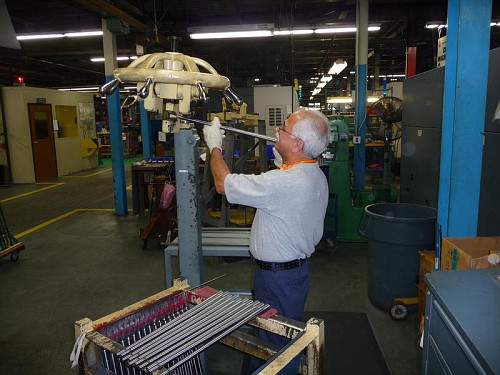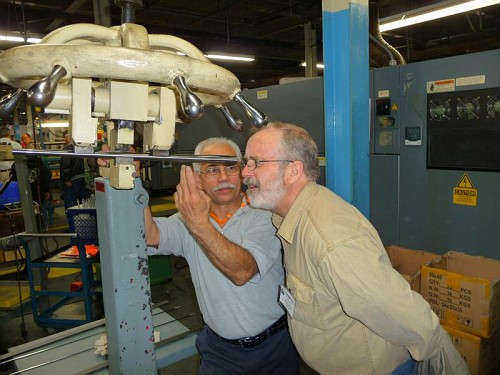With all this talk about how to set up a barrel in a lathe and most of it revolving around a discussion about the straightness of the barrel..............
I offer this......We have all heard about the quite good accuracy of the Savage factory rifles. Some of us have witnessed seemingly amazing accuracy from relatively inexpensive rifles.
Without going into a discussion of toggle headed bolts and barrel nuts being responsible for some of this accuracy, we need to discuss two areas that Savage claims is responsible for the majority of the accuracy.
Button rifles barrels using a very guarded secret button lubricant....And for this discussion, barrel straightening. While attending a tour of the factory, I saw "The Guy"
as he is sometimes refereed to, using an ancient hand wheel press like shotgun builders use to straighten a barrel. Eye sight and a trained hand is all that is used. I was offered an opportunity to see a before and after. I was simply amazed at what you could see with the human eye. I was told that when tested with some type of test instrument, the human eye process was nearly perfect.
Why is Savage the only barrel manufacturer I know of that straightens barrels? Why do they straighten them after contouring and after rifling but before chambering?


I offer this......We have all heard about the quite good accuracy of the Savage factory rifles. Some of us have witnessed seemingly amazing accuracy from relatively inexpensive rifles.
Without going into a discussion of toggle headed bolts and barrel nuts being responsible for some of this accuracy, we need to discuss two areas that Savage claims is responsible for the majority of the accuracy.
Button rifles barrels using a very guarded secret button lubricant....And for this discussion, barrel straightening. While attending a tour of the factory, I saw "The Guy"
as he is sometimes refereed to, using an ancient hand wheel press like shotgun builders use to straighten a barrel. Eye sight and a trained hand is all that is used. I was offered an opportunity to see a before and after. I was simply amazed at what you could see with the human eye. I was told that when tested with some type of test instrument, the human eye process was nearly perfect.
Why is Savage the only barrel manufacturer I know of that straightens barrels? Why do they straighten them after contouring and after rifling but before chambering?



